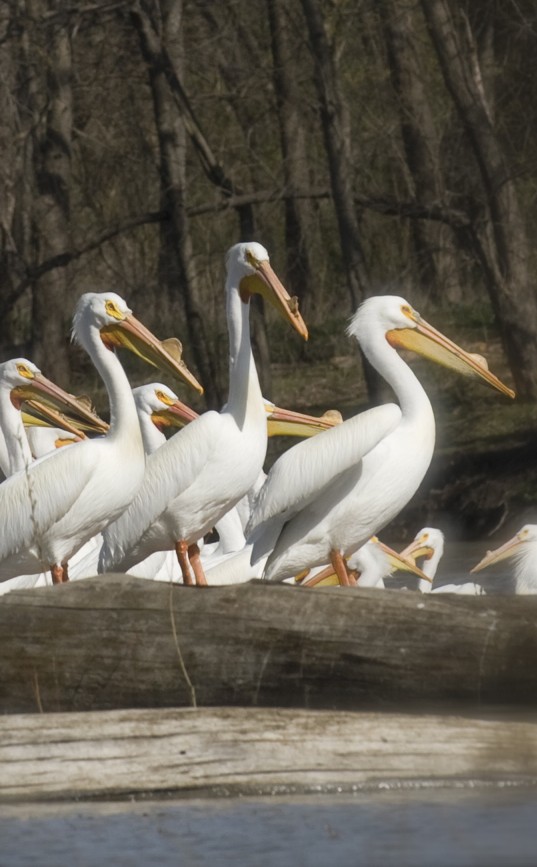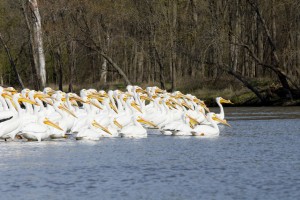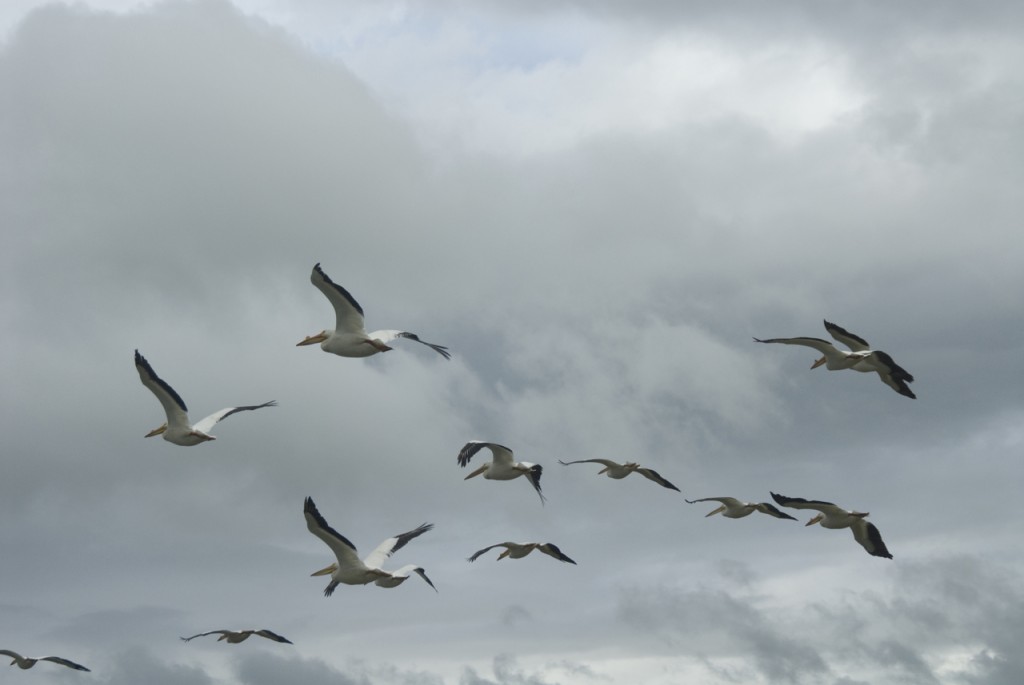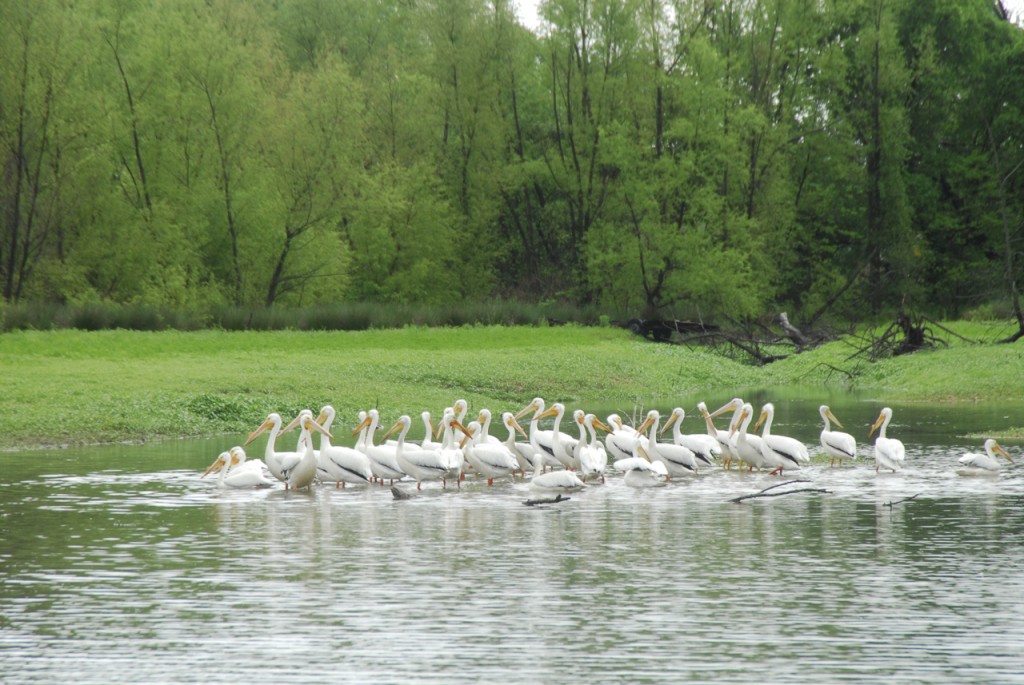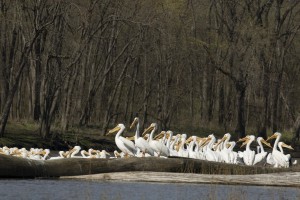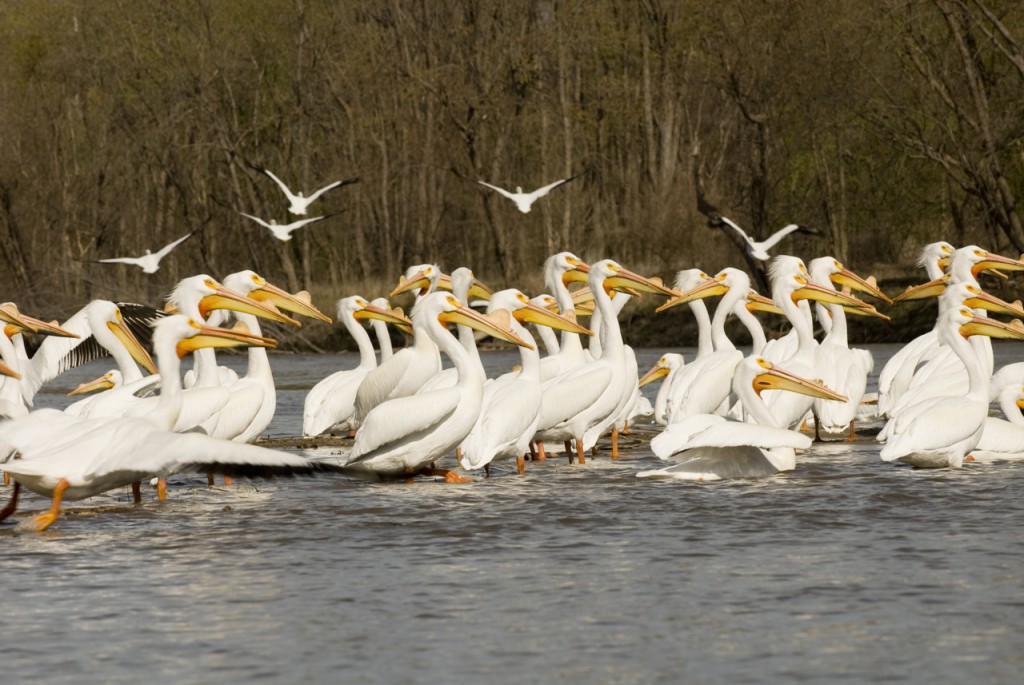Wonderful Pelicans…
“A wonderful bird is the pelican,
His bill will hold more than his belican.
He can take in his beak
Food enough for a week.
But I’m damned if I see how the helican.”
Dixon Lanier Merritt
A postcard sent by a Florida-vacationing reader inspired Merritt, then an editor at Nashville’s daily paper The Tennessean, to pen his limerick in 1910. Merritt, who became a founding member of the Tennessee Ornithological Society, could only express his comic bemusement due to a picture and not through actual observation of pelicans that, at the turn of the 20th century, were barely surviving.
Merritt might more accurately have wondered how “the helican” pelicans would continue to exist, for both brown and white pelican populations had been nearly eliminated. At a breeding colony in North Dakota the numbers of breeding pairs plummeted from 500 pairs to 50 just between 1905 and 1908. The very first National Wildlife Refuge, Pelican Island, Florida, was set aside as a breeding area for birds in 1903; the near loss of pelican colonies in the inland areas moved President Theodore Roosevelt to create a national wildlife refuge at Chase Lake, North Dakota in 1908.
White pelican numbers have rebounded to about 180,000 in North America. And, a trip to our American Bottoms in Monroe County is becoming increasingly like a visit to the beach, with larger numbers of shorebird visitors and, most of all, dramatic numbers of American White Pelicans (Pelcanus erythrorhynchos) over the last five years. Large rafts of pelicans often can be found during fall and spring, and, during the rest of the year in small flocks or single individuals, at Moredock, Kidd and Conner Lakes.
There are eight species of pelicans in the world. All are very social, gathering in large flocks; all are colonial breeders, establishing large communal rookeries. Most pelicans are long-lived, many with life spans of 15-20 years. White and Brown Pelicans are native to North America, but you will have to visit our coastlines to see brown pelicans, which rarely venture inland.
The American White Pelican is a very large bird and easily recognized. Typical adults are 5 feet long, with a 9-foot wingspan and weigh about 20 pounds. Their bills and the attached large pouch are the easy giveaway for identification. The long, normally yellowish bill turns a deep orange-pink and sports a fibrous two-inch long knob about two-thirds down the bill during breeding season. The gular pouch, essentially a self-contained grocery bag, is used for catching and straining food. Adult white pelicans have pronounced black feathering along both the upper and lower trailing edge of their wings.
White pelicans are among the most graceful soaring birds of our skies. During migratory flights, they will travel in extended “V” formations but at other times often ride within thermals, rising higher and higher in upward spirals of nearly effortless motion. During such circular ascents, the entire flock often appears then disappears only to again become visible as sunlight reflects and refracts in a twinkling manner on their shining whiteness. Each individual bird conforms to the turning and wheeling of the entire flock with a natural precision that choreographers of human dancers can only envy.
But watching a pelican land in the water evokes no images of grace or, even, apparent planning, for then the pelican seems to be clumsily courting a crash landing.
Writer Jack Turner explained in a 1996 essay, “But every time they land on the river, it looks like a disaster. They drop the backs of their huge wings, throw out their feet like wheels, and land with a controlled crash – like a 747. Every time, they almost nose over; every time, they just make it. Then, to regain their composure, they tuck their bills into their chests with that snotty, satisfied-English-butler look and casually paddle off…..”
Once in the water, white pelicans feed in groups and simply swim along scooping up foodstuffs in their large bills. The groups often will work together, beating the water with their wings to drive and corral small fish toward other group members. Pelican diet consists of rough fish, crayfish and salamanders. While brown pelicans engage in spectacular aerial dives to catch fish deep in water, white pelicans sieve and scoop, using their flexible mouth pouches as dip nets in shallow waters of only three to five foot depths.
White pelicans normally winter along our coastlines, and migrate inland for breeding. They breed only after they are 4-5 years old, but non-breeding sub-adults accompany the flocks in their northern migration and will often lounge and hang around in smaller flocks often hundreds of miles from historical breeding locations. Twenty-seven colonial breeding sites in 11 north central great plains states and four Canadian provinces have traditionally constituted all the rookeries in North America.
White pelicans mate only once a year and remain paired for that breeding season. Adults usually arrive at colonial rookeries in April. Male courtship displays include strutting, bowing, and pointing their bills straight up in the air. Once bonded, both male and female construct a nest on the ground using sticks, grasses and reeds for construction materials. Each nest is about a foot high and 2-3 feet wide.
Normally two, chalky-white eggs, 3½” by 2½”, are laid. Both parents incubate the eggs for approximately 30 days, taking turns to leave the site for foraging for food. Chicks are born naked and flesh colored. At 10 days old chicks are covered with thick white down. The parents take turns visiting nearby marshes, rivers, and lakes, but at some rookeries often travel as far as 100 miles distant, to find and swallow food. The gular pouch is not used to hold and transport food back to the nest. Parent birds partially digest food and then later regurgitate in order to feed their chicks.
At about 3 weeks old, chicks from numerous parents are gathered into protective groups called crèches or pods. The young pelicans begin to fly in 7-10 weeks, and shortly thereafter abandon their breeding colony. About three-quarters of the chicks survive to adulthood.
Nearly half of the entire white pelican population in North America breed at four colonies: Marsh Lake in Minnesota, Medicine Lake National Wildlife Refuge in Montana, Bitter Lake National Wildlife Refuge in South Dakota, and Chase Lake National Wildlife Refuge in North Dakota. The Chase Lake breeding colony is the largest with 35,000 breeding birds recorded there in the early 2000s.
Since white pelicans are colonial-nesting birds and their rookeries are concentrated in a few small areas, they are extremely vulnerable to disturbances, such as disease, predation, or weather events, which can dramatically influence reproductive productivity. Between 2002-2005, several large-scale disturbances at the breeding colonies appear to have shifted white pelican summering — and breeding — territories eastward to the Mississippi River and have resulted in the increased numbers of pelicans in Monroe County.
In 2002 and 2003, West Nile virus infected pelican chicks at the colonies, causing mortality in about half the youngsters. In May 2004, for uncertain reasons, nearly 30,000 white pelicans dispersed from Chase Lake, abandoning their chicks, and have never returned to the refuge in as great numbers. In 2005, a late-May cold outbreak, with frigid strong winds, killed 8,000 chicks at Chase Lake. Pelican populations at the refuge have declined to 14,000 in 2009.
This summer, for the first time in Illinois, white pelicans successfully bred on an island of the Mississippi River in Carroll County in the extreme northwest corner of the state. Given the apparent eastward shift in white pelican summer and breeding ranges, we can hope that in time they may be breeding in Monroe County.
That promise is now more possible because of the tremendous wetland restoration efforts that have been ongoing at Kidd and Conner Lakes in Monroe County. A handful of resourceful duck hunting club operators have painstakingly restored perennially flooded and marginal farmlands to their former naturally wet conditions – the large, marshy shallow lake bed of ancient pre-settlement times. Myriads of waterfowl and shorebirds now again visit on their twice-annual migrations. The shallow waters of these recreated wetlands, teaming with emergent plants and invertebrates, form a rich food larder enabling survival and reproductive success for migratory birds. The feathered flurry on the bottoms bears witness to the riches of wildlife our area can help sustain and support.
Clifftop, a local nonprofit organization, is focused on preserving and protecting area bluff lands.
A version of this article appeared in the January 1st 2010 edition of the Monroe County Independent.
© 2010 all content rights reserved, Clifftop NFP.
Comments are currently closed.

